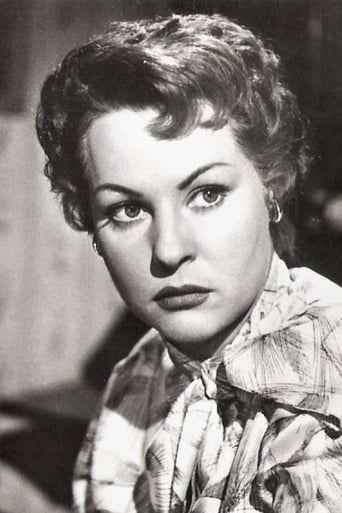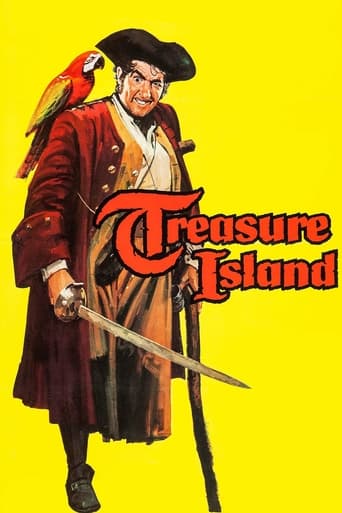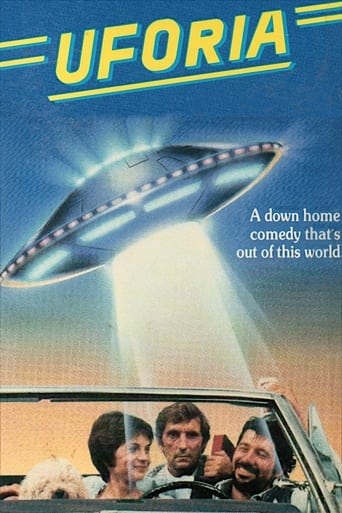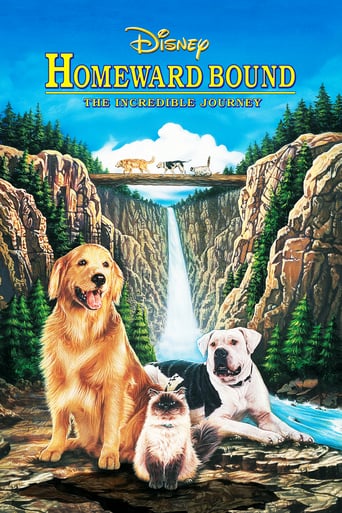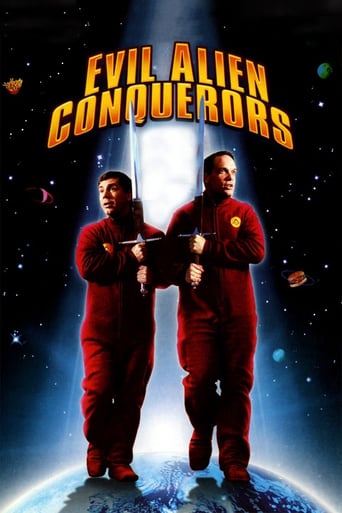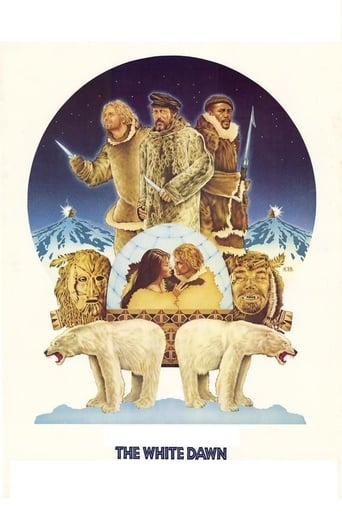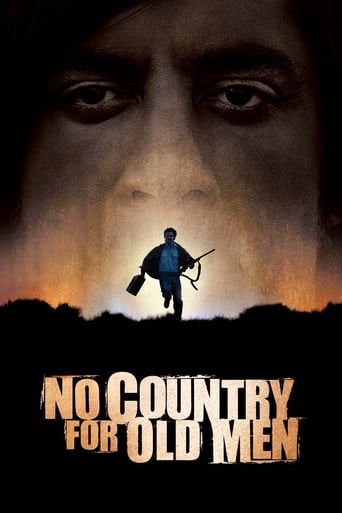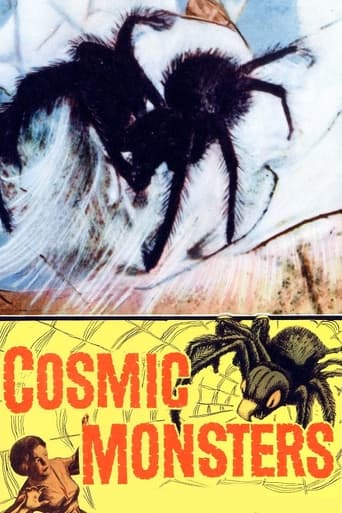
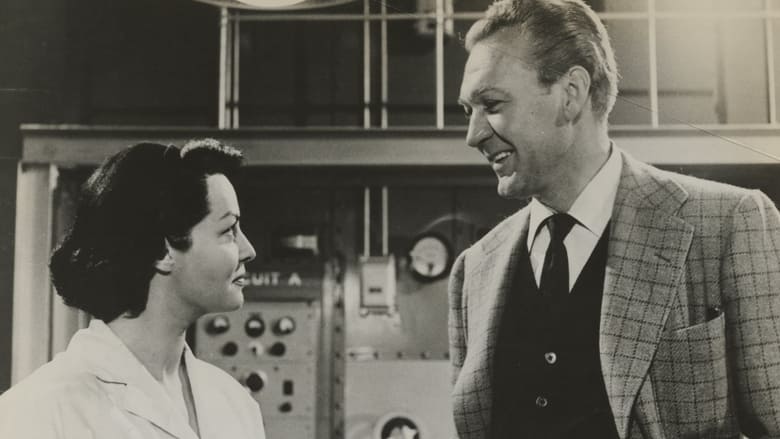
The Strange World of Planet X (1958)
Near a small English village, a scientific team is conducting experiments with magnetic fields, the results of which may have military applications but the intensification of which seem to be connected to UFO reports, a series of murders, an enormous insect egg, and a strange visitor with exceptional scientific knowledge.
Watch Trailer
Cast
Similar titles
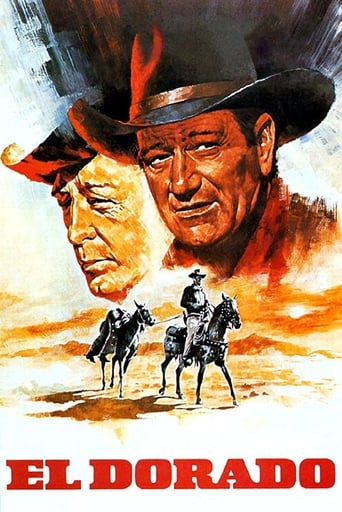
Reviews
Pretty good movie overall. First half was nothing special but it got better as it went along.
it is finally so absorbing because it plays like a lyrical road odyssey that’s also a detective story.
The movie's neither hopeful in contrived ways, nor hopeless in different contrived ways. Somehow it manages to be wonderful
Story: It's very simple but honestly that is fine.
This film was a British attempt to get into the 1950s craze of "giant monster" sci-fi thriller movies, and ends up being a bizarre hybrid of "The Day The Earth Stood Still", "Tarantula" and "Plan 9 From Outer Space". Unfortunately, this film takes far too long to get to the point and an opening 45 minutes of tedious talk and precious little action is likely to make viewers give up on it. A film can easily get away with being short on action if there are other elements in place to maintain the viewer's interest, but this one is horribly lacking, with the most lacklustre dialogue and direction, ham-fisted plotting and truly dreadful, one-dimensional characterisations. The romance between Forrest Tucker's 'hero' (who actually doesn't do very much throughout the film) and Gaby André's token female scientist who is brought in to assist him (with some overtly sexist reactions, even by the standards of the time) is forced through with no natural or credible development. Some characters are completely superfluous and others could do with more screen time to flesh them out. For instance some of the female characters appear to be included just so that they can put under threat, but the sense of menace against them is considerably diluted in every case when the viewer has had no time to warm to the character in the first place.A sense of menace is ill-served by the direction also. Dramatic events just happen without any build-up of suspense, such as when the woman is attacked at the bus-stop: we don't see her being watched, we don't see mysterious feet creeping towards her, we don't see her growing sense of unease as she begins to feel that something is wrong... And then when she is set upon, she's saved almost instantaneously (by a man arriving in a car who has somehow weighed the whole situation up before he's even close enough to see what is happening). The shots in scenes where characters are interacting are, almost without exception, composed with very little imagination, and too often actors are static, standing there with their bodies facing the camera straight on with both arms hanging straight down by their sides as though they have been placed there like mannequins.The plot lacks proper thrust and although there's a lot of debate about the merits of the scientific experiments going on at the research centre, in the first half of the film there's no foreshadowing of the startling effects they will have on wildlife, with the only things to worry about seeming to be that they make strips of metal become flexible, briefcases fly across rooms and television sets in the local pub explode. Resultingly the viewer is left wondering where the film is possibly heading, but not in the sense that one is compelled to see what happens next.Of course what ultimately happens is that the experiments cause the area to be exposed to cosmic rays, which naturally enough cause all of the insects to grow to giant proportions... Not just doubled in size or anything, but conveniently large enough to be bigger than humans. At least at that point the film becomes more interesting, albeit rather nonsensical. At times the effects of the magnetic field generated by the laboratory are described as covering 80 miles, and yet the threat from the cosmic rays appear to be neatly confined to just a small area of woodland and this is where the giant insects appear, causing no damage to the vegetation yet vigorously pursuing any woman they see. André foolishly gets herself tangled up in the web of a giant spider, but luckily Tucker, being a macho man, can simply tear it off her to set her free. And then a lot of soldiers turn up and start shooting at the insects. This film, wisely perhaps given some unconvincing equivalents such as those in "The Monster From Green Hell", opts to use footage of real insects in extreme close up to achieve the illusion of its giant mutants, images which must have been unsettlingly effective when seen on the big screen. They move quickly and naturally, avoiding all the pitfalls of lumbering props, but regrettably the integration of these cutaway shots is seldom satisfactory as the different lighting levels and frequent view of soldiers shooting at something off-screen highlight that these are just film inserts rather than give any sense that the insects are really present in the same scene. To be fair, though, there is an unexpectedly graphic shot of a dead soldier having his face chewed away by one of the bugs.Martin Benson plays "Smith", the requisite alien visitor concerned about man's tampering with forces he does not fully understand, and delivers a pleasing performance of calm assurance given the constraints. Too much about Smith's involvement with events seems fortuitous, and it is his character who delivers most of the solutions which perhaps doesn't say much for mankind's chances. His eventual departure in his flying saucer is the final act of cheapness in this film, as we neither see him entering his craft nor see it taking off, instead only getting a glimpse of a rather hilarious cutaway shot of the other characters raising their heads as though they are watching the ascent of a spacecraft.I did like the twist about the real identity of the titular Planet X, but there's precious little to like overall in this piece. Its final third is a bit of silly but escapist hokum, but the opening two-thirds are utterly dull, and there's no harsher judgement to place on a film than it being dull!
In a small lab in rural England, three scientists work on experiments involving magnetism. There's British Dr. Laird (Alec Mango), American Gil Graham (Forrest Tucker), and French Michele Dupont (a badly-dubbed Gaby André ). A mysterious stranger named Smith (Martin Benson) shows up and warns them about their experiments. He turns out to be right because the experiments have had unpredictable results, including releasing giant bugs on the English countryside.Not bad but not great sci-fi movie from across the pond. Most of the special effects are admittedly pretty lousy. Still, it's far better than its reputation. The romance between Tucker and André is nauseating. The overt sexism is pretty amusing, though. My favorite scene is when Smith first appears to a little girl in the woods. There's some funny dialogue there.
I caught this early today on Turner Classics as "The Cosmic Monsters" and hung around for the next feature, "Queen of Outer Space". On a relative basis, the Zsa Zsa flick is better, but seriously, that's not saying a whole lot. However this one has all the great and goofy pseudo-science I love to hear in sci-fi and horror flicks of the era, like Dr. Laird's (Alec Mango) method of altering the molecular structure of metals and alloys by experimenting with magnetic fields. The spin-off here is that his experiments create a hole in the ionosphere, thereby allowing dangerous cosmic rays to penetrate Earth's atmosphere and mutate living things. Guess what - they look just like giant size close-ups of crickets, frogs, and assorted insects! They even threw a lizard into one scene that actually looked fairly normal size, not at all like the creature in 1959's "The Giant Gila Monster".As predictable as the whole thing was, the film suffered somewhat from abrupt scene changes that distracted from the flow of the story. Like the creepy old guy in the woods who popped up every now and then. I guess the picture was setting us up for his eventual exposure to the cosmic rays, but then why didn't they affect any other humans? Just wondering.The picture offers a character similar to that of Michael Rennie's Klaatu from 1951's "The Day the Earth Stood Still", that of Smith (Martin Benson) who carries a warning from outer space to the inhabitants of Earth who are unknowingly posing a threat to the universe by virtue of Laird's experiments. The comparison ends pretty much right there however, with Smith allowed to signal his outer space fleet to wipe out the professor's scientific gizmo along with his cabin. I guess these aliens weren't bothered by things like a Prime Directive. It really didn't bother me either.
I saw this movie once - over 40 years ago - and I still remember it very well. Even as a kid, very few movie really scared me, but this one did. The resident mad scientist does something that let in lots of bad cosmic rays and the local insects become giants. The school is a one room affair set in the middle of a forest. The giant insects attack the school trapping the teacher & the kids. Most horror movie monsters looked hokey - but the monsters in this were extreme close-ups of real insects. It wasn't until Alien that I saw a movie monster as scary as those giant bugs.

